Wear your sunscreen.
Sharing my skin cancer story + prevention advice from a licensed esthetician
Skin cancer wasn’t something I thought I’d be dealing with at 30.
And yet, I’ve been diagnosed with it three times. None of my skin cancer diagnoses have been life-threatening, and for a while, I convinced myself that maybe this wasn’t worth posting about.
But I’ve come around and decided that it’s important to share my story, what to look for, and what I’ve learned the hard way about sun protection, because if it helps even one person catch something early—or just start wearing SPF daily—it’s worth sharing!
And because prevention is everything, I also interviewed
, a licensed esthetician and writer of Esthetically on Substack, to get her expert take on the best sunscreens, the truth about “anti-aging” products, and what she actually recommends to protect your skin long-term. Scroll to the bottom for her recs!How I ended up here
I’ve spent most of my life in the sun. I feel the most me on an 80 degree beach day, swimming in crisp ocean water in a small bikini.
Growing up, my mom always told me to wear sunscreen, but she wasn’t strict about it, and I don’t really remember her putting it on me. She dealt with skin cancer her entire adult life, and was diagnosed with at least one melanoma that I knew of. I feel like she constantly minimized the situation because she didn’t want to worry us.
I figured it was the result of her tanning habits growing up—she told me stories of tanning on the hood of her car, slathered in baby oil, on top of the white sands of southern New Mexico. I assumed her skin cancers came from that—baking under the sun literally cooking in oil, on top of a very reflective surface. It didn’t occur to me that being casual about sunscreen could land me in the exact same place.
In my childhood and early adulthood, sunscreen didn’t feel that essential. I went to college in Florida and tanned year-round. I’d check the UV index like it was a weather forecast for joy—if it was over a 7, I’d absolutely thrilled. I’d throw on some SPF on my face (if I remembered), and maybe a baseball cap. My version of sun protection was letting myself get a base burn, then using Coppertone SPF 15 after an hour of cooking in the sun.
In hindsight, this was so stupid. When you’re in your teens and early twenties, it’s hard to believe anything bad could happen to you. You feel invincible, and like the inevitable signs of aging and mortality are lightyears away. I though tanning outside was a “healthier” option— I never used tanning oil, and I never set foot in a tanning bed. My brother’s high school girlfriend used to lay out after spraying herself with PAM cooking spray. Certainly, I’d be safe, because at least I wasn’t being that careless.
I knew skin cancer ran in my family, but it never seemed like something I had to worry about in my 20s. Then, last year at 29, I was diagnosed with my first Basal Cell Carcinoma.
Hopefully, we’ve all heard of the ABCDEs of skin cancer, which are used to identify potential melanoma. But those guidelines only apply to melanoma. Basal and Squamous Cell Carcinomas act differently, and they’re much more common. They’re not deadly if caught, but they do need to be removed ASAP so they don’t spread.
My first skin cancer spot had been missed during two separate annual skin checks. It was a tiny bump on the side of my nose that came and went for two years. I thought it was a stubborn pimple or a clogged pore. When I finally asked my dermatologist about it, he brushed it off. He was far more concerned about my mild dandruff (rude) and sent me home with a prescription shampoo. The whole visit felt very rushed, and I was a bit put off.
It wasn’t until I saw a side profile photo of myself a month later that I really noticed the spot. Something looked off, and it was much bigger than I originally thought. That moment, plus my ever-reliable health anxiety, pushed me to get a second opinion. A new, better dermatologist biopsied it immediately. A week later, it was confirmed: skin cancer. I needed MOHs surgery to remove it, ASAP.
Following my first diagnosis, I dove into a Reddit rabbit hole (I don’t recommend doing this for cancer or a scary diagnosis of any kind). My mom passed away six years ago from causes unrelated to her skin cancer, so I couldn’t even call her for advice or get a definitive timeline on when this started happening to her. I became obsessed with finding the best dermatologic surgeon and plastic surgeon duo in NYC to operate on me and minimize scarring. I was terrified of permanent disfigurement—I’d seen too many Reddit thread horror stories of people being very scarred for life!
While I waited for surgery, another flaky patch appeared on my face that wouldn’t go away. I practically begged my new dermatologist for a biopsy. That one came back positive, too.
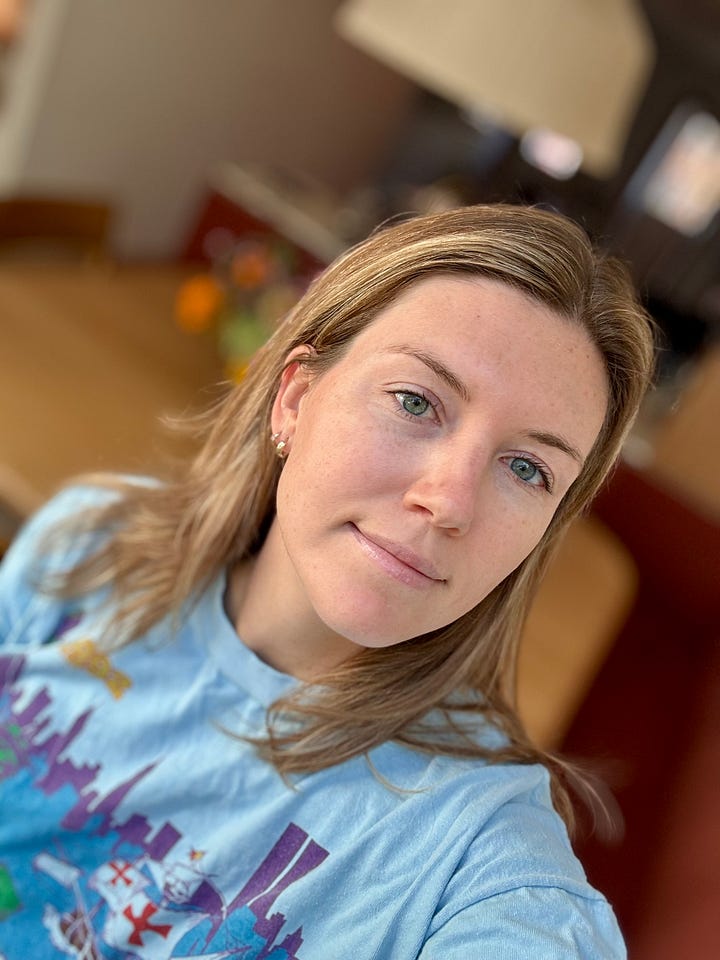
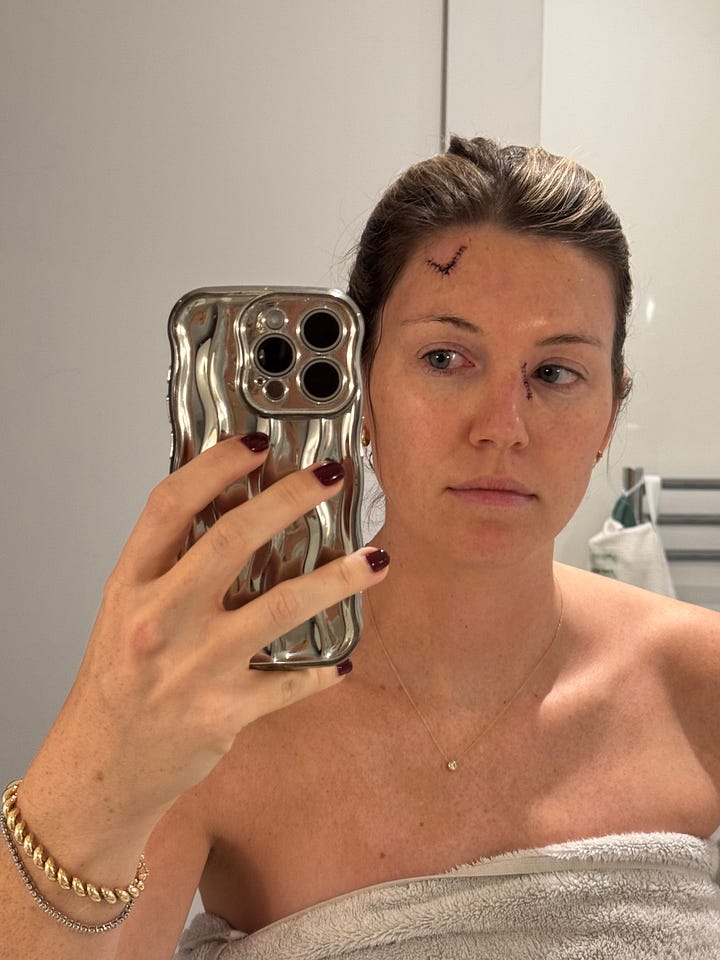
Seven months ago, I had both procedures in a single day. I went home skin cancer-free, but with nearly 30 stitches on my face. Thankfully, it wasn’t a painful experience, but it was still very scary. I had to take a nuclear dose of Valium before I let my doctors get anywhere near me with a scalpel. I didn’t leave the house for a month. I fell into a pretty deep depression. On top of feeling mutilated, I was literally scared to go outside because I was scared of the sun, the carcinogenic star I once worshipped and loved so deeply.
Thankfully, I’m healing wonderfully, but I do have permanent scarring that’s definitely visible when I’m not wearing makeup. But I’ve gotten good at hiding it, so unless you knew what to look for, you probably wouldn’t even notice. Emotionally I haven’t healed, especially since I now know this will be a part of the rest of my life, and the scare of Melanoma will always be lurking around the corner. Summer used to be my favorite season, but now I’d be lying if I said I wasn’t nervous about staying protected during upcoming beach days and summer travel.
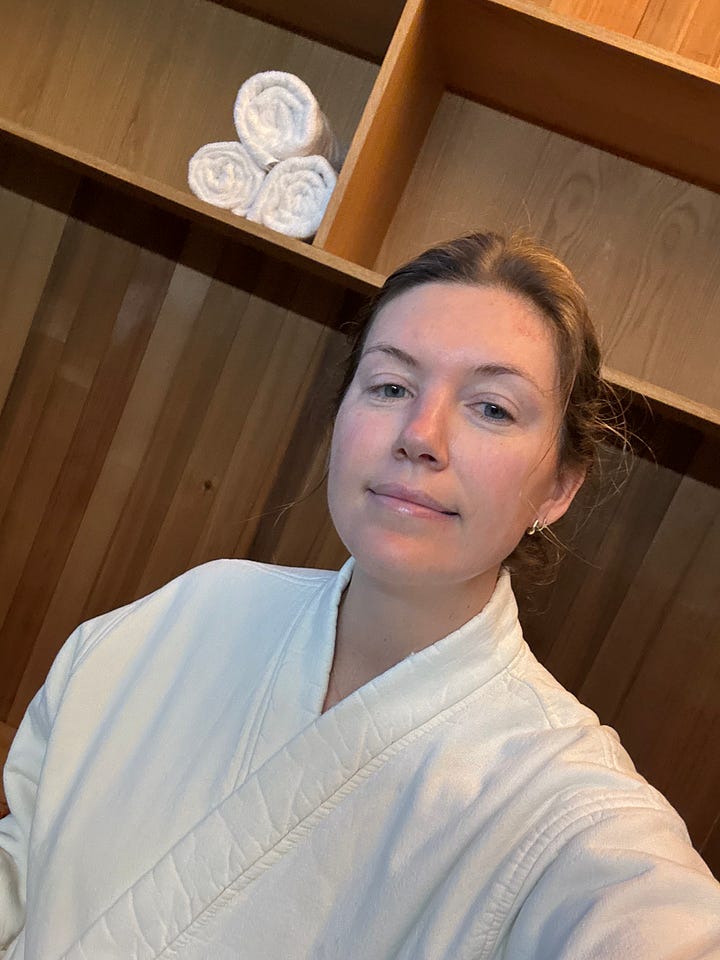
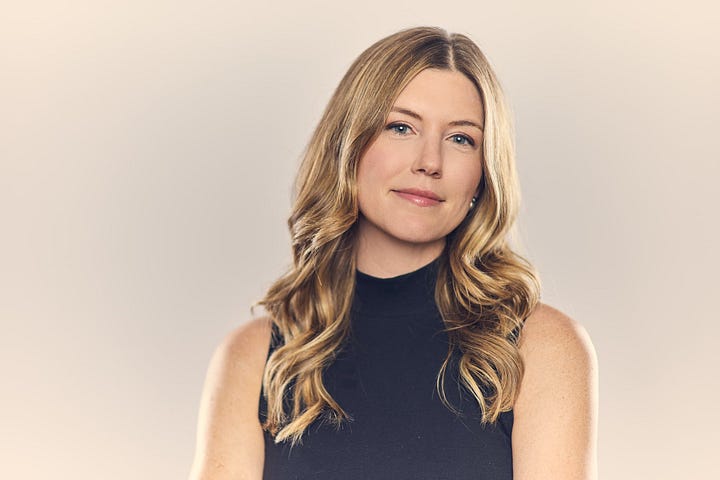
The skin cancers that continue to show up on my body now are from sun damage that happened 10 to 15 years ago. I’ve been religious about sunscreen for the past five years. Once my frontal lobe *finally* finished developing, I realized the foolishness of my youth and the very real importance of protecting my skin. I genuinely believed I could avoid this fate by being diligent with sun protection from age 25 onward, but the damage had already been done.
Last week, I had yet another MOHs surgery on the side of my face—for a third spot, smaller than half of a pencil eraser. Even though it was small and caught very early, it still took eight stitches to close. The spot was on my face for less than a month.
That said, there is hope. My dermatologist tells me that if I stay serious about sun protection, these spots could stop popping up in a decade or so. I’m planning to start a round of preventative chemotherapy cream this fall. Apparently, it’s one of the most painful topical treatments you can go through (trigger warning: this is what it’s like), but if I do it every few years on my face and chest, it could help prevent future skin cancers and surgeries, so ultimately, the pain is worth it.
I’m still afraid of the sun, but I’m determined to keep living, traveling, and going to the beach. I’ll just be the girl under the umbrella, wearing SPF 50, my massive hat, and reapplying like it’s my religion (yes, you can still get burned in the shade—reflected light is real).
I’m not posting this to scare you, but here’s what I want you to take away from all of this.
Statistically, that spot you're worried about is probably nothing. But wear your sunscreen anyway. Every day, rain or shine, beach or no beach. If you notice anything new or unusual on your skin that doesn’t go away after a few weeks, get it checked. Even if it seems minor. Get skin checks annually, and if you’re not sure about a spot, it never hurts ask and advocate for yourself.
Prevention advice from Ashley of Esthetically
Hi Ashley! Tell me a bit about yourself.
Hi Bella! I am an esthetician in Kansas City, and also write Esthetically on Substack. I spent 12 years in marketing for architecture firms before going back to school and getting my esthetics license… that was a major disruption to my first-born, eldest daughter, risk-averse nature. But I’ve loved skincare and treatments and the science behind it all for so long—why not do a full career switch in your mid-30s?
What’s one thing you wish every client understood about sun damage and its long-term impact on skin health and appearance?
The risk of skin cancer is obviously the most critical piece—I love reminding people to call their dermatologist and schedule an annual skin check. My clients are naturally focused on the stuff that’s easy to see, and that’s when I share that sun damage can be responsible for as much as 90% of visible aging in the skin. The wrinkles, pigmentation, loss of elasticity, uneven tone, redness, etc., that we spend time and money trying to correct or prevent? Sun damage.
SPF has really improved in recent years—what ingredients or formulations do you look for in a sunscreen that actually feels good on the skin?
I’ve followed Charlotte Palermino since the pre-Dieux days and have learned so much from her – that’s where I first learned about Beauty of Joseon’s amazing formulas.
What I love about Korean sunscreens is that they feel and apply like skincare, and there’s never a white cast. A lot of them are formulated with ingredients like hyaluronic acid, ceramides and rice extract, and they feel hydrating and nourishing on the skin. You’ll see SPF 50+ PA++++ on most formulas, too, which means that 98% of the UVB (or ‘burning’) rays are being blocked, and you’re also getting amazing UVA protection. The cherry on top: in my experience, the liquid formulas generally sit well under makeup, and aren’t a pain to reapply throughout the day.
Beyond sunscreen, what are your top 2–3 skincare products or ingredients for preventing and treating sun damage and early signs of aging?
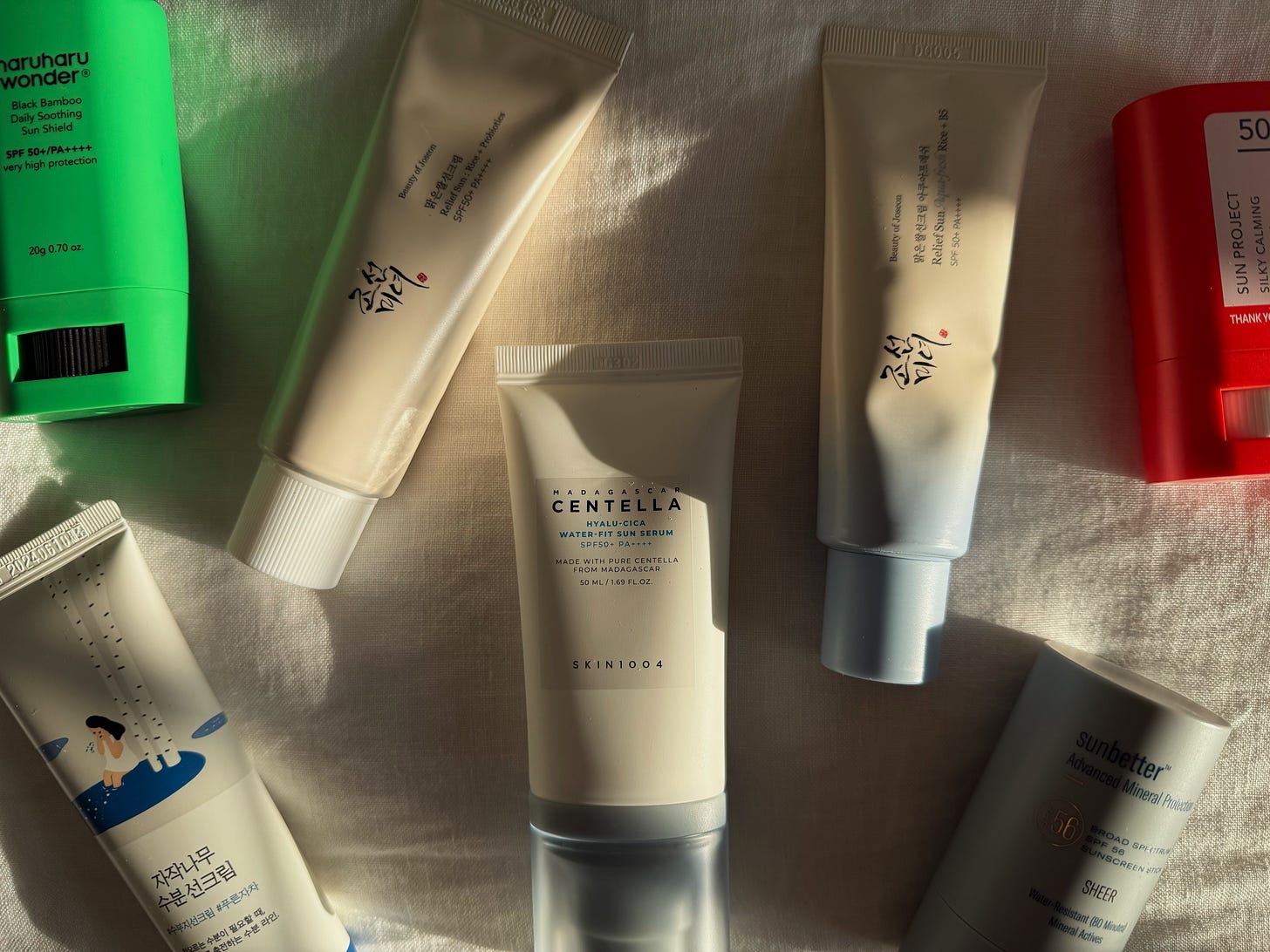
My first application of the day is always the Beauty of Joseon Relief Sun Aqua-fresh. Most days start at the gym or outside for a walk, and I love a lightweight formula like this when I know I’ll be getting sweaty. If I’m seeing clients and want a little more of a makeup-ish look, I’ll add the Colorescience Flex tinted SPF or Ciele SPF Tinted Serum as my “foundation.” Maybe it’s silly to wear more SPF on top of SPF, but silly > sorry.
How do you personally approach sun protection when you still want to enjoy travel, beach time, or outdoor events?
What I lack in seasonal allergies, I make up for in a weird sun allergy. If I’m in a warm climate or very direct sunlight, I break out in a hive or chicken pox-looking rash that starts on my chest and works its way to my limbs. So fun! Luckily, I despise being hot and don’t naturally gravitate to beach getaways.
Regardless, when I’m traveling or spending time outside, I’m militant about SPF on my face, neck and chest, and try to be as conscious with any other exposed skin, too. I love-love-love a baseball hat, and I know a linen pant + white tee combo hates to see me coming in the summer. My summer “uniform” thankfully provides a good amount of coverage!
What’s your opinion on preventative measures like retinoids, chemical peels, or laser treatments for high-risk skin? Are they worth it before visible damage appears?
Preventative care is easier (and more cost-effective) than corrective care. If you’re not consistent with your SPF use and limiting unnecessary UV exposure, treatments like peels and lasers will always be a temporary fix. That said, even without visible damage, you’ll always see improvement in skin tone and tightness, as well as fine lines, with any or all of that line-up.
If you’re already seeing sun damage (dark spots, uneven tone, early wrinkles), investing in peels, IPL, lasers, or microneedling can make a dramatic difference—but it’s crucial to have realistic expectations. I do a lot of IPL treatments for clients wanting to get rid of sunspots, and when we’re discussing the treatment plan, I offer gentle reminders that it takes decades for those spots to appear. Expecting one treatment to “fix” these issues isn’t realistic. Long-lasting results rely just as much on the after-care and day-to-day routine (SPF!!!) as they do the treatment itself.
You mentioned to me that you’ve had several spots biopsied—what are some early signs that made you think, “This should get checked”?
I love this question because I’ve had several spots biopsied, and none of them looked irregular to me. A few years ago, I noticed a few small, hardly-raised bumps on my nose, that I wrote off as a part of aging. I went in to my annual skin check thinking it was going to be so boring for my derm, but when she was examining my face, she got serious for a second and started asking me about the little “bumps” on the tip of my nose. She went ahead with removing them because they looked like they could be basal cell carcinomas, but thankfully my biopsies were all clear. I’ve always had a few dark moles that I keep tabs on for any changes, but after those lesions on my nose, I’m hyper-aware of things that look “normal” but may be serious.
Lastly, what would you say to someone in their teens or twenties who still thinks “a little color” is worth the risk?
A fake tan is the best tan, and the only safe ones come in the form of a spray, foam, lotion or serum. It makes me ill to think of all the time I spent intentionally damaging (sometimes burning) my skin for the sake of “a little color.”
I have a mobile spray tanning setup that my friends capitalize on for special events, and I personally use a tanning foam at home when I need to feel a little bit better about myself. There are too many good, affordable options that are readily available for any of us to think permanent damage to our skin makes sense!
If you’re going through something similar and want to chat, feel free to reach out. My DMs are always open, and you can email me at bella@mind.holiday.
xx,
Bella


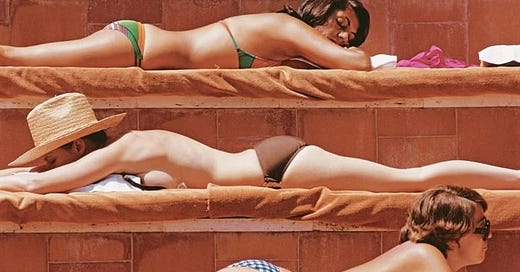



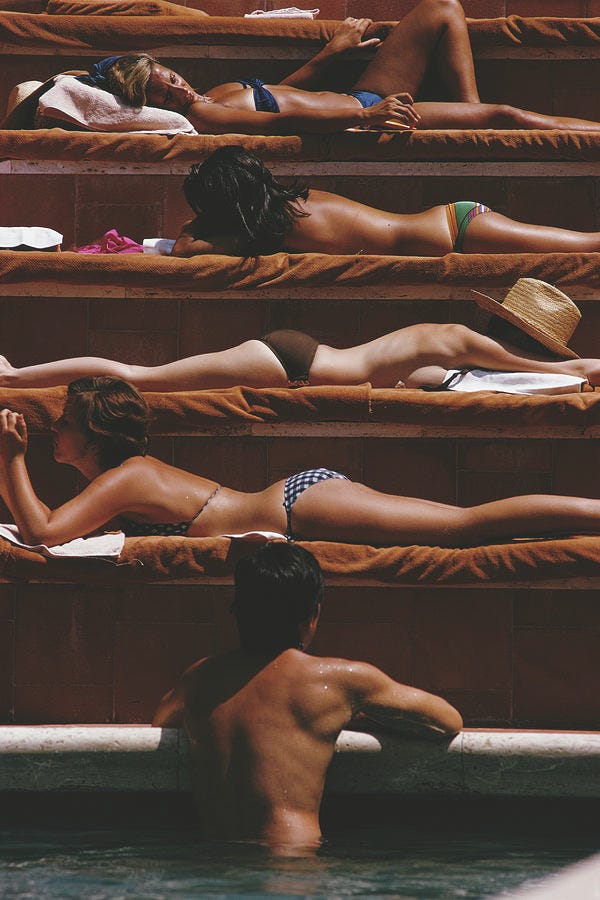
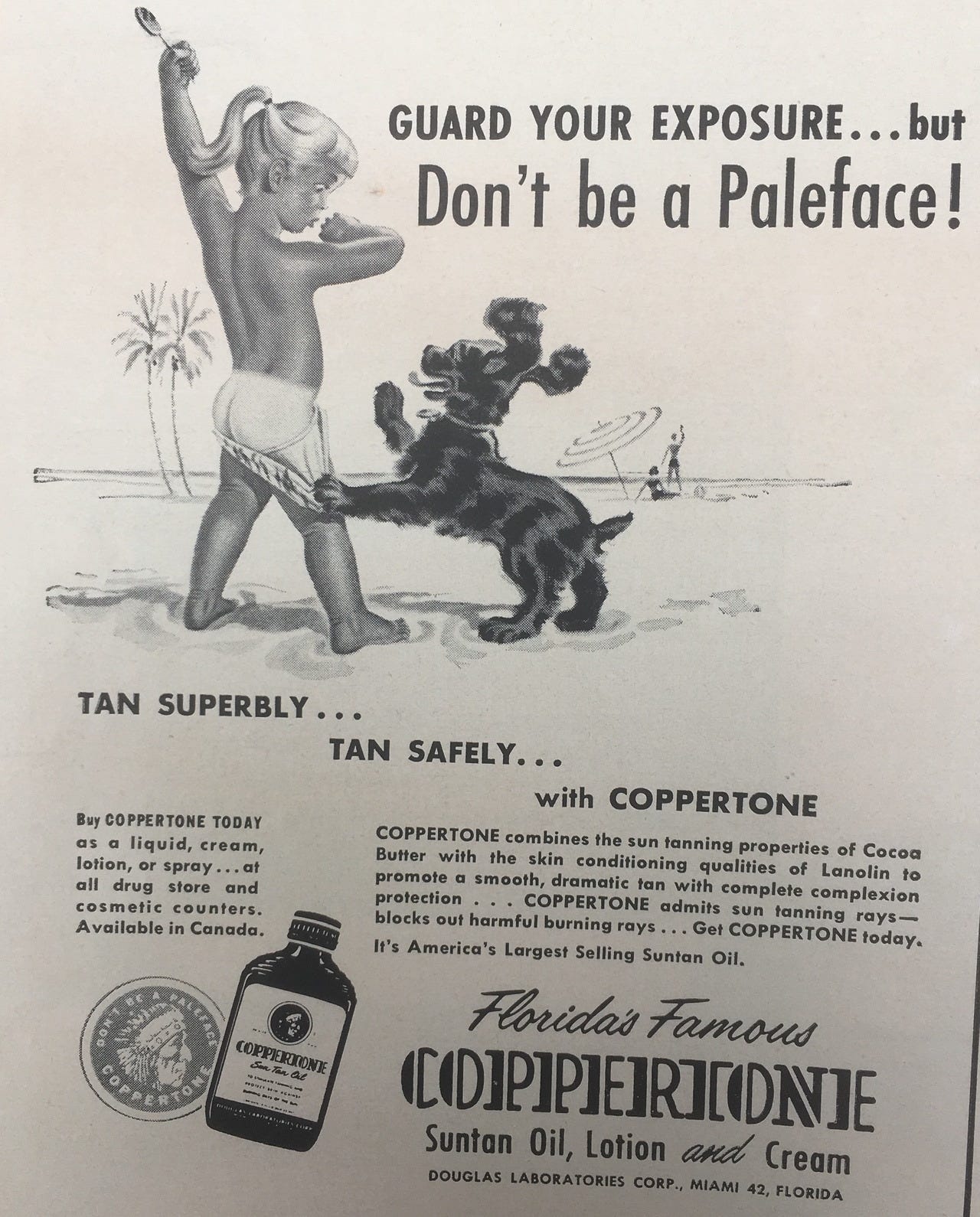
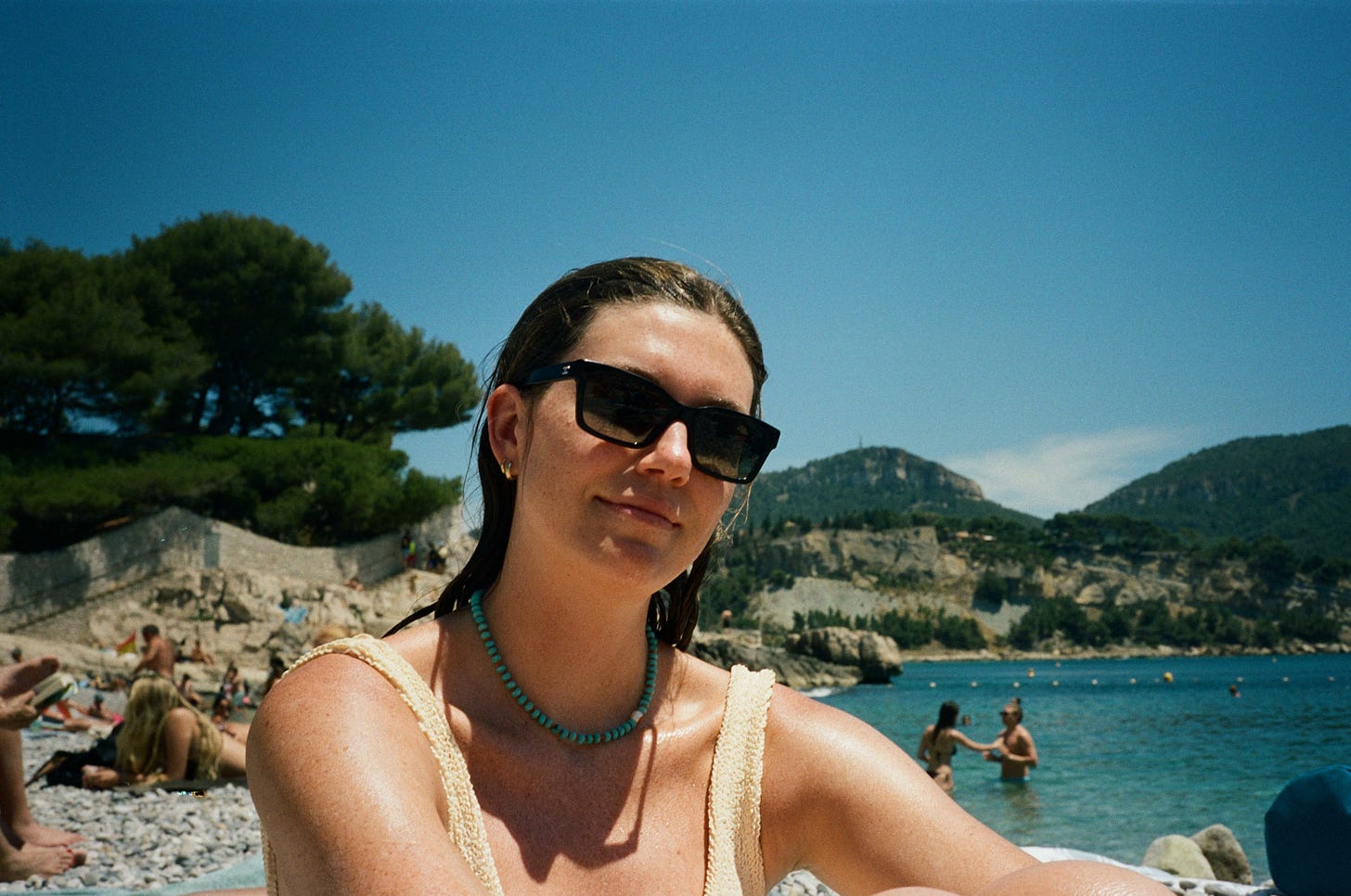
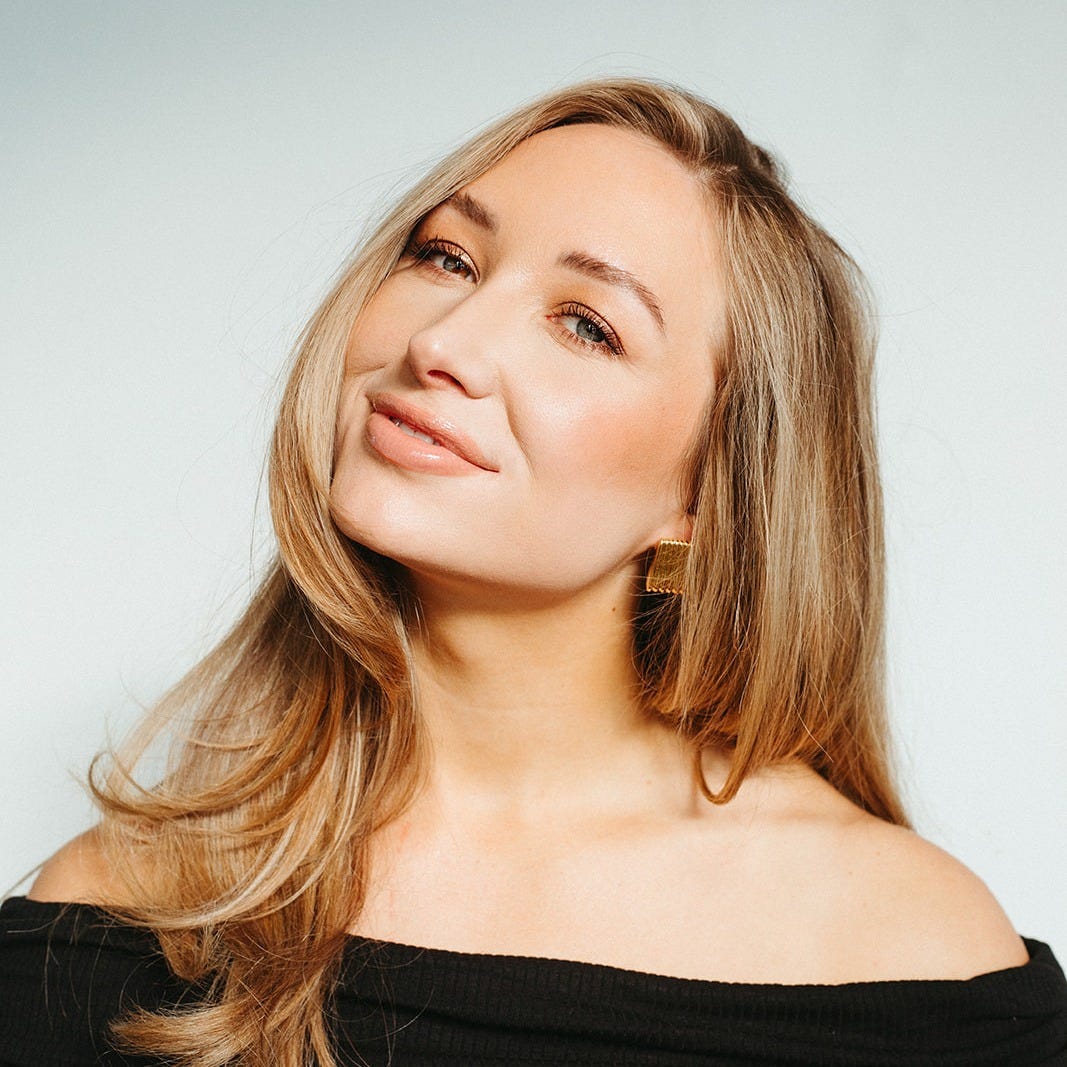

Love this collab!
Two of my favorites!! Amazing read and eye opening for so many— I feel that sometimes we think being young that we can’t get a diagnosis like the one you shared. This made it sooooo much more real for me. I was born and raised in Arizona and it felt like “wearing sunscreen” was never a discussion. It was more about getting outside and enjoying time by the pool because of the heat. Now that I’m hitting 30, it’s top of mind for me. Thank you for the reminder and for sharing your story. Love the advice from Ashley too, wonderful wonderful!!